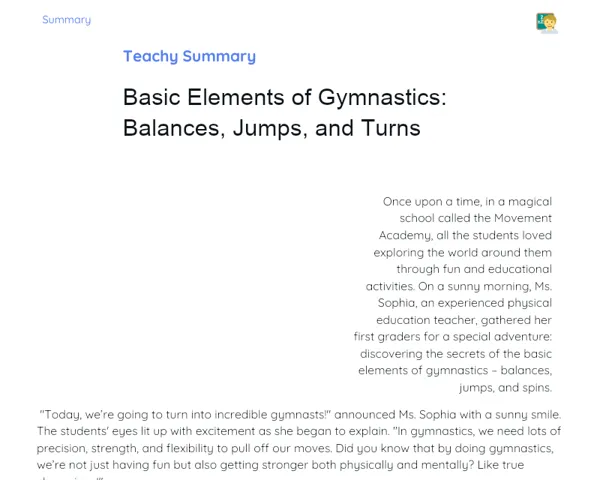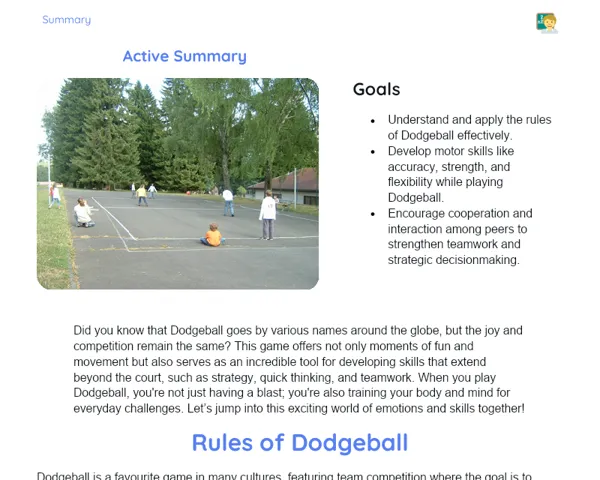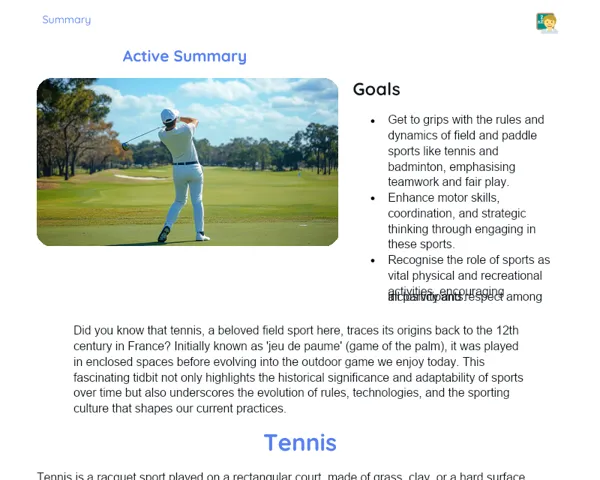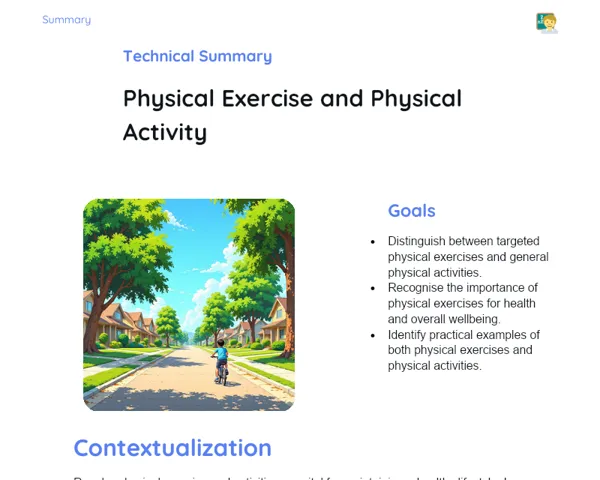Goals
1. Develop fundamental physical skills like motor coordination, balance, and agility.
2. Encourage teamwork and cooperation among learners through engaging gameplay.
3. Foster creativity and problem-solving skills in practical contexts.
4. Promote social interaction and effective communication among students.
5. Enhance spatial awareness and orientation through hands-on activities.
Contextualization
Hopscotch is one of the oldest games around, enjoyed by kids from various cultures for centuries. This simple yet fun activity is fantastic for developing motor skills like balance, coordination, and agility. Plus, playing hopscotch teaches kids the importance of following rules and working in teams, skills that are vital in many areas of life. For example, while jumping from one square to another, kids must maintain their balance on one foot, which really helps their motor coordination. In group play, they learn to take turns and collaborate, ensuring that everyone has a good time.
Subject Relevance
To Remember!
History and Origin of Hopscotch
Hopscotch is a traditional game that has its roots in various ancient cultures, including Roman times. Initially, it served as a physical exercise for soldiers to improve agility and endurance. Over the years, the game has spread across cultures, each adding its own twist to the rules while keeping the playful and educational spirit intact.
-
Originates from various ancient cultures as a form of physical training.
-
Evolution of the game's rules through cultural exchange.
-
Historical and cultural significance of hopscotch.
Basic Rules of the Game
To play hopscotch, draw a diagram on the ground with numbered squares and use a marker like a stone or a coin. The player tosses the marker onto one of the squares and hops from one square to another on one foot, avoiding the square with the marker on it. The aim is to complete the course without losing balance or stepping on the boundaries.
-
Draw the hopscotch diagram with numbered squares.
-
Toss a marker onto the squares.
-
Follow the rules for hopping on one foot and avoiding the lines.
Motor Skills Involved
Playing hopscotch helps develop a range of motor skills, including motor coordination, balance, and agility. By hopping from square to square on one foot, learners strengthen their balance. Tossing the marker and hopping on the right squares enhances motor coordination. Agility is improved as students swiftly navigate the diagram.
-
Enhancement of balance when hopping on one foot.
-
Development of motor coordination through marker tossing.
-
Improvement of agility while traversing the hopscotch diagram.
Practical Applications
-
Sports: Activities that require coordination and balance, like gymnastics or athletics.
-
Physical therapy: Rehab exercises that utilise motor skills gained from hopscotch.
-
Team Building: Activities that encourage teamwork and cooperation through play.
Key Terms
-
Motor Coordination: The ability to efficiently use different parts of the body in a controlled manner.
-
Balance: The ability to maintain a stable position whether stationary or in motion.
-
Agility: The ability to move quickly and easily.
Questions for Reflections
-
How can playing hopscotch aid in the development of motor and social skills?
-
In what ways might the skills gained from hopscotch be applicable in other activities or careers?
-
What challenges did you face while setting up and playing hopscotch, and how did you tackle them?
Creative Hopscotch Challenge
Design a hopscotch layout with a creative and unique shape, using materials you have at home.
Instructions
-
Think of a different design for hopscotch, not just the usual straight line with numbered squares.
-
Use materials from your home, such as tape, chalk, cardboard, or anything else that can help you draw or set up hopscotch.
-
Draw or set up your hopscotch on the ground, making sure all squares are safe and easy to jump on.
-
Invent new rules for the game, adding fun challenges like jumping backwards or with your eyes closed on certain squares.
-
Try out the new hopscotch with your friends or family and see how the new rules change the dynamics of the game.
-
Reflect on the motor and social skills you developed while creating and playing your unique hopscotch.



